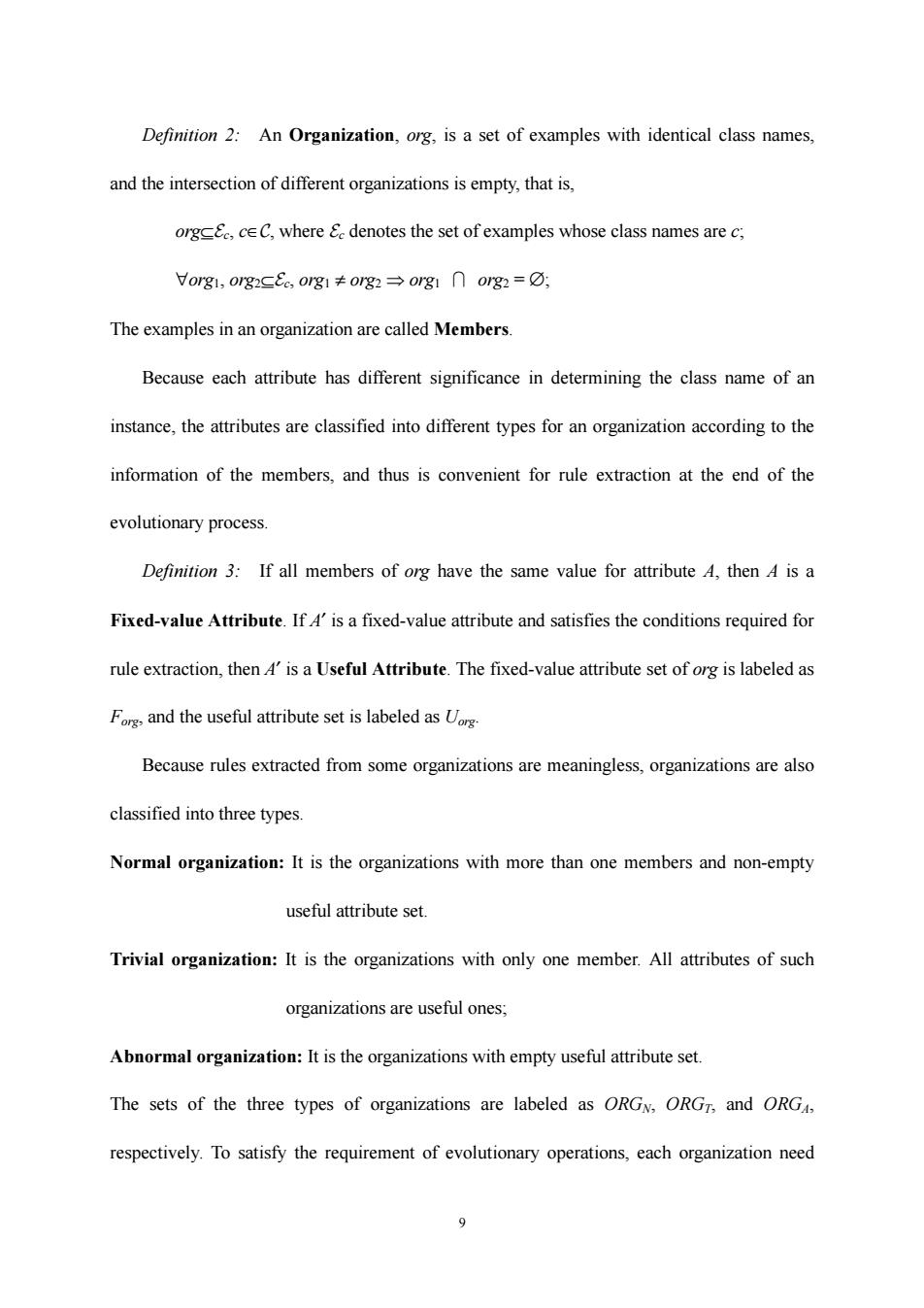正在加载图片...

Definition 2:An Organization,org,is a set of examples with identical class names, and the intersection of different organizations is empty,that is, orgcEc,ceC,where &c denotes the set of examples whose class names are c; Vorg1,o1g2CE。,org1≠org2→0rg1∩0rg2=☑: The examples in an organization are called Members. Because each attribute has different significance in determining the class name of an instance,the attributes are classified into different types for an organization according to the information of the members,and thus is convenient for rule extraction at the end of the evolutionary process. Definition 3:If all members of org have the same value for attribute A,then A is a Fixed-value Attribute.If 4'is a fixed-value attribute and satisfies the conditions required for rule extraction,then 4'is a Useful Attribute.The fixed-value attribute set of org is labeled as Fand the useful attribute set is labeled as Because rules extracted from some organizations are meaningless,organizations are also classified into three types. Normal organization:It is the organizations with more than one members and non-empty useful attribute set. Trivial organization:It is the organizations with only one member.All attributes of such organizations are useful ones; Abnormal organization:It is the organizations with empty useful attribute set. The sets of the three types of organizations are labeled as ORGN,ORGT,and ORG, respectively.To satisfy the requirement of evolutionary operations,each organization need 99 Definition 2: An Organization, org, is a set of examples with identical class names, and the intersection of different organizations is empty, that is, org⊆Ec, c∈C, where Ec denotes the set of examples whose class names are c; ∀org1, org2⊆Ec, org1 ≠ org2 ⇒ org1 ∩ org2 = ∅; The examples in an organization are called Members. Because each attribute has different significance in determining the class name of an instance, the attributes are classified into different types for an organization according to the information of the members, and thus is convenient for rule extraction at the end of the evolutionary process. Definition 3: If all members of org have the same value for attribute A, then A is a Fixed-value Attribute. If A′ is a fixed-value attribute and satisfies the conditions required for rule extraction, then A′ is a Useful Attribute. The fixed-value attribute set of org is labeled as Forg, and the useful attribute set is labeled as Uorg. Because rules extracted from some organizations are meaningless, organizations are also classified into three types. Normal organization: It is the organizations with more than one members and non-empty useful attribute set. Trivial organization: It is the organizations with only one member. All attributes of such organizations are useful ones; Abnormal organization: It is the organizations with empty useful attribute set. The sets of the three types of organizations are labeled as ORGN, ORGT, and ORGA, respectively. To satisfy the requirement of evolutionary operations, each organization need